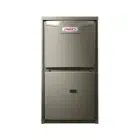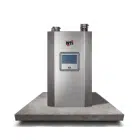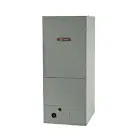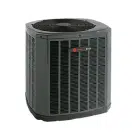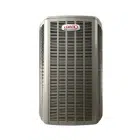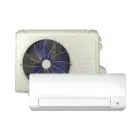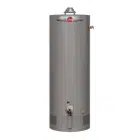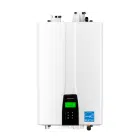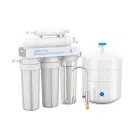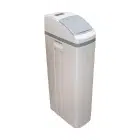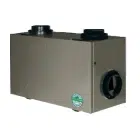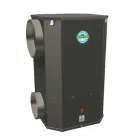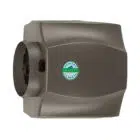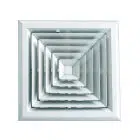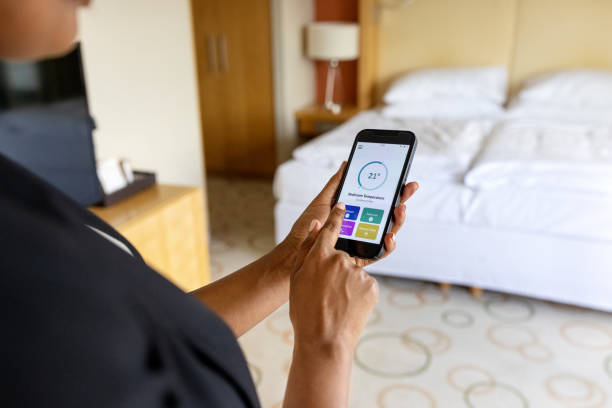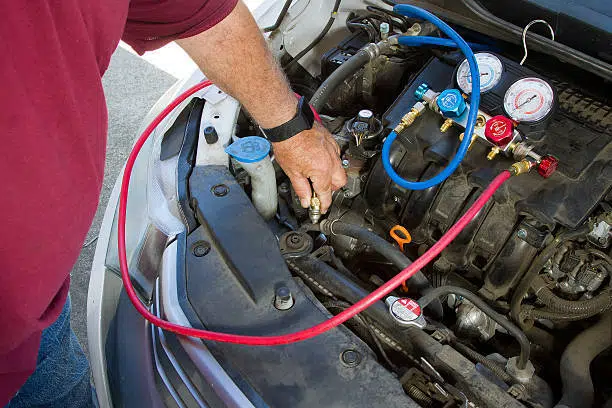
Table of Contents
An air conditioner that isn’t cooling properly can be frustrating, especially during the peak summer months. Whether your unit is blowing warm air, struggling to reach the set temperature, or not turning on at all, understanding the root cause of the problem is essential. In this guide, we’ll walk you through how to fix an air conditioner that’s not cooling, covering common causes, troubleshooting steps, and when to call a professional.
Regular maintenance can prevent many cooling issues, but if your AC is already malfunctioning, this guide will help you diagnose and resolve the problem efficiently.
Common Reasons Your Air Conditioner Isn’t Cooling
Before you learn how to fix an air conditioner that’s not cooling, it’s important to understand the most common reasons why this happens. Several factors can affect your AC’s cooling performance, including dirty filters, refrigerant leaks, thermostat issues, and mechanical failures. Air conditioner error codes can also often help identify the cause of the malfunction.
1. Clogged or Dirty Air Filters
A clogged air filter restricts airflow, making it difficult for your AC to cool your home efficiently. Over time, dirt and debris can accumulate in the filter, leading to reduced cooling performance.
How to Fix:
- Check your air filter and replace it if it’s dirty.
- If you have a reusable filter, clean it with water and let it dry before reinserting it.
- Regularly changing your filter every 1-3 months can prevent future cooling issues.
2. Incorrect Thermostat Settings
If your thermostat is not set correctly, your AC may not cool your home properly. This could be due to the thermostat being set to “heat” mode, incorrect temperature settings, or a faulty thermostat sensor.
How to Fix:
- Make sure your thermostat is set to “cool” mode.
- Set the temperature at least 5 degrees lower than the current room temperature.
- If your thermostat runs on batteries, replace them to ensure proper function.
3. Low Refrigerant Levels or Leaks
Refrigerant is essential for cooling your home. If your AC is low on refrigerant, it won’t be able to remove heat effectively.
How to Fix:
- Check for ice buildup on the refrigerant lines, which could indicate a leak.
- If you suspect a leak, call a professional HVAC technician to diagnose and refill the refrigerant.
4. Dirty or Blocked Condenser Coils
Your AC’s outdoor condenser unit releases heat from your home. If the coils are dirty, they can’t expel heat effectively, reducing cooling efficiency.
How to Fix:
- Turn off your AC and inspect the outdoor unit.
- Clean the coils using a soft brush or hose.
- Remove any debris or obstructions around the condenser unit.
Step-by-Step Guide on How to Fix an Air Conditioner That’s Not Cooling
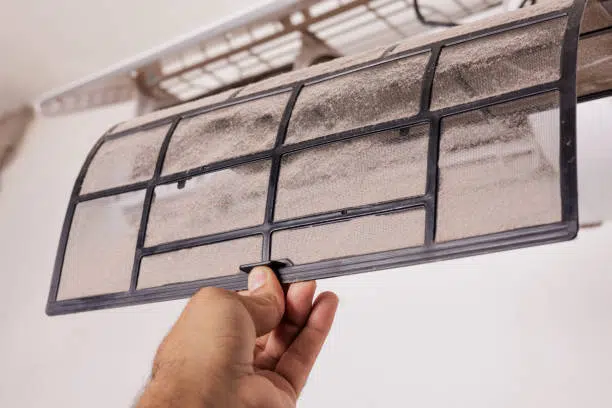
If your AC is still not cooling, follow this step-by-step troubleshooting guide:
Step 1: Check and Replace the Air Filter
A clogged air filter can cause numerous AC issues. Inspect and replace it if necessary.
Step 2: Inspect the Thermostat
Ensure the thermostat is set correctly and is functioning properly.
Step 3: Examine the Circuit Breaker
If your AC isn’t turning on at all, check the breaker panel and reset any tripped breakers.
Step 4: Clean the Condenser Coils
Dirt buildup on the outdoor unit can hinder heat dissipation. Cleaning the coils can help restore cooling efficiency.
Step 5: Ensure Proper Airflow
Blocked vents and registers can restrict airflow. Make sure all vents are open and unobstructed.
If these steps don’t resolve the issue, it’s time to call a professional service provider to inspect for more serious problems.
When to Call a Professional AC Technician
Some AC problems require professional expertise. Contact the AC repair service if:
- Your AC is still not cooling after basic troubleshooting.
- You hear strange noises coming from the unit.
- There is ice buildup on the refrigerant lines.
- You suspect a refrigerant leak.
Our licensed technicians will efficiently resolve the issue, ensuring your home stays comfortable without disruptions. Let us handle the problem so you can return to your daily routine stress-free.
How Much Does AC Repair Cost in Canada?
If your AC requires professional repair, costs can vary depending on the complexity of the issue and the parts needed. Here are some estimated costs for common AC repairs in Canada:
Repair Type | Estimated Cost (CAD) |
|---|---|
Diagnosis Fee
| $80–$150 |
Refrigerant Recharge
| $200–$600 |
PCB Replacement
| $250–$800 |
Compressor Repair/Replacement
| $500–$1,500 |
Fan Motor Replacement
| $150–$400 |
Sensor Replacement
| $100–$300 |
Keep in mind, that these prices can fluctuate based on location, service availability, and the severity of the problem.
Conclusion
Understanding how to fix an air conditioner that’s not cooling can save you time and money. By troubleshooting common problems like dirty filters, thermostat issues, and low refrigerant levels, you can often restore your AC’s cooling performance without professional help. However, for more serious issues such as compressor failure or refrigerant leaks, calling an HVAC technician is the best course of action.
Regular AC maintenance, including cleaning condenser coils and replacing air filters, can prevent many cooling issues from occurring in the first place. If you experience ongoing problems with your AC, don’t hesitate to reach out to a professional for a thorough inspection and repair.
Keeping your air conditioner in top shape ensures a cool and comfortable home all summer long.
FAQs
1. Why is my air conditioner running but not cooling?
If your AC is running but not cooling, it could be due to several reasons: dirty air filters blocking airflow, a clogged condenser coil, low refrigerant levels, or thermostat issues. Start by cleaning or replacing your air filter, ensuring your thermostat is set to the correct cooling mode, and checking for any visible obstructions around the outdoor unit. If the issue persists, it may be a refrigerant leak or a failing compressor, which requires professional attention.
2. How often should I clean or replace my AC filter?
You should check your air filter at least once a month and replace it every 1-3 months, depending on usage and air quality. If you have pets or live in a dusty environment, you may need to replace it more frequently. A dirty filter restricts airflow, forcing your AC to work harder, leading to poor cooling and higher energy bills.
3. What should I do if my AC is leaking water inside my home?
An AC leaking water indoors is usually caused by a clogged condensate drain line, a frozen evaporator coil, or a damaged drain pan. Turn off your AC, inspect the drain line for blockages, and clean it with a wet/dry vacuum. If the coil is frozen, let it thaw before restarting the unit. If the problem continues, call HVAC Service Solutions for a thorough inspection.
4. Can I recharge my AC refrigerant myself?
Recharging refrigerant is not a DIY task. Handling refrigerant requires specialized equipment and certification due to environmental regulations. If your AC is low on refrigerant, it likely has a leak that needs professional repair. Contact HVAC Service Solutions, and our licensed technicians will locate and fix the leak before recharging your system.
5. How much does it cost to fix an AC that’s not cooling?
Repair costs depend on the issue. A simple fix like replacing a thermostat may cost $100–$300, while major repairs like a refrigerant recharge can cost $200–$600. Compressor repairs or replacements can go up to $1,500. Regular maintenance helps prevent costly breakdowns, so scheduling routine service with HVAC Service Solutions is a wise investment.
6. Why is my AC freezing up?
If your AC coils are covered in ice, it’s often due to restricted airflow, low refrigerant levels, or a faulty blower motor. Start by checking and replacing the air filter. If that doesn’t help, inspect the evaporator coil for dirt buildup or obstructions. If the issue persists, you may need professional service to check for refrigerant leaks or mechanical failures.
7. How can I improve my AC’s efficiency?
To improve your AC’s efficiency:
- Keep air filters clean and replace them regularly.
- Ensure vents are open and unblocked.
- Clean the condenser coil and remove debris around the outdoor unit.
- Schedule annual professional maintenance to check refrigerant levels and electrical components.
If your system is still struggling, upgrading to a more energy-efficient model might be the best option.
8. When should I replace my air conditioner instead of repairing it?
If your AC is over 10–15 years old and requires frequent repairs, replacing it may be more cost-effective. Newer units are more energy-efficient and come with improved features that lower energy bills. If repair costs exceed 50% of the price of a new unit, it’s a good idea to invest in a replacement. Our experts at HVAC Service Solutions can help you choose the right system for your home.
9. What should I do if my AC smells bad?
A musty smell could indicate mold or mildew in your ductwork or evaporator coil. A burning smell may signal electrical issues, while a rotten egg odor could mean a gas leak. Turn off your AC and contact a professional immediately if you notice any unusual smells, as they could indicate serious problems.
10. How long does it take to repair an AC that’s not cooling?
The repair time depends on the issue. Simple fixes, like replacing a thermostat or cleaning coils, can take 1–2 hours. More complex repairs, such as replacing a compressor or fixing a refrigerant leak, may take several hours or require a follow-up visit. Our team at HVAC Service Solutions works quickly and efficiently to restore your comfort as soon as possible.
Share

